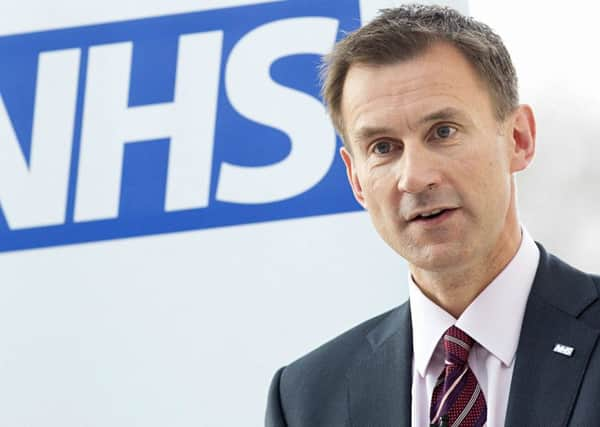Two Yorkshire health trusts in '˜major alerts' daily


Mid Yorkshire Hospitals NHS Trust, which runs services in and around Wakefield, and Leeds Teaching Hospitals, which controls the city’s two main hospitals, both said they were “experiencing major pressures compromising patient flow” in each of the six days from January 3.
The Leeds hospitals were still reporting a “level three” alert - the second highest - yesterday, a spokesman confirmed.
Advertisement
Hide AdAdvertisement
Hide AdAcross England, more than four in 10 hospitals declared major alerts last week, and 66 of the country’s 152 trusts issued operational pressure alerts as bed shortages intensified and A&E departments became overwhelmed.
The number of alerts was more than six times higher than the previous six days.
At the same time, separate figures from the Royal College of Emergency Medicine showed that only 74pc of patients were seen within four hours in A&E, against a 95pc target.
The demand on the health service is forecast to get worse in the coming weeks, with NHS England warning that the flu season peak may still be to come.
Advertisement
Hide AdAdvertisement
Hide AdOn Thursday, Prime Minister Theresa May said there had been a “small number” of incidents of unacceptable practice in NHS trusts, while Health Secretary Jeremy Hunt has said there were problems in “one or two” areas.
The Royal Surrey hospital in Guildford, which serves some of Mr Hunt’s constituents, confirmed it had been forced to turn a gym into a place to put extra beds as it became overwhelmed with patients.
The hospital said its “negative bed position” triggered a decision “to use a gym space on one of our wards to provide additional temporary bed capacity”.
The BBC calculated that one in five emergency patients last week experienced a delay of at least four hours for a bed - twice the rate seen over the past year.
Advertisement
Hide AdAdvertisement
Hide AdAlmost one in four patients waited over four hours to be seen in A&E, and in some places it reached nearly half.
NHS Providers chief executive Chris Hopson said: “Daily attendances at A&E last week were consistently above 50,000. Bed occupancy rates - at or around 95% throughout the week - remained unacceptably high.”
He said the majority of trusts were “managing to keep their heads above water - just”.
But he added: “The pressure on our hospital, ambulance, community and mental health services is unsustainable and the resilience of the system to cope with unexpected shocks, such as flu outbreaks, is impaired.”
Advertisement
Hide AdAdvertisement
Hide AdMrs May has said the NHS received more than it asked for in its funding settlement - something disputed by NHS England chief executive, Simon Stevens, who told MPs that would be “stretching it”.
On Thursday, senior managers from the NHS Confederation warned the service had reached “tipping point” and it was time the Government accepted that “limited investment” had “consequences”.
Liberal Democrat health spokesman Norman Lamb said: “When hospitals face this kind of pressure day after day, there can be no doubt patient care will suffer. There is now an avalanche of bad news showing hospitals are struggling to cope.”